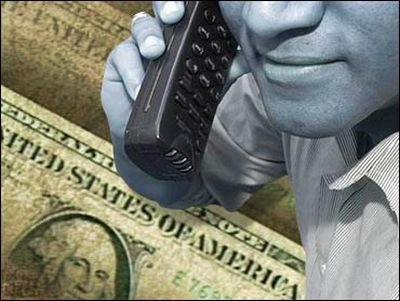Telephone Scam Costs Vancouver, Washington Victim $10,000
A new survey found that approximately 17.6 million Americans were victims of a phone scam in the past 12 months, and lost an average of $488.80.

(VANCOUVER, Wash. ) — Police in Vancouver, Washington want you to be aware of a phone scam that cost one victim $10,000.
Vancouver police say a relative of the victim contacted them after he learned that someone posing as a law enforcement officer requested payment to avoid arrest.
Over a three day period, the victim purchased numerous pre-paid credit cards, and gave the information to the person claiming to be the law enforcement official, which in all totaled $10,000.
Vancouver police are still investigating this case, and have not received any other reports of this nature.
The Vancouver Police Department would like to remind the public to never provide personal or financial information over the telephone.
If contacted by someone claiming to be from an organization requesting personal or financial information, you should hang up, locate the official organization phone number online or in the phone directory, and place a call to the official number to confirm any details.
If you believe you have been the victim of this, or any other scam, please contact a law enforcement agency, and make a report.
Truecaller, the world’s largest verified mobile phone community, recently announced findings from it’s first study on the impact of phone scams on U.S. adults.
Two online surveys were conducted by Harris Poll on behalf of Truecaller in 2014, with questions covering the frequency of fraud and suspected fraud calls, the amount of money lost, and steps Americans are taking to protect themselves.
According to one survey, approximately 17.6 million Americans were victims of a phone scam in the past 12 months and lost an average of $488.80.
This accounts for a massive scam that costs Americans approximately $8.6 billion annually, and breaks down to an average of $35.60 for each U.S. adult.
The survey also showed Americans had a greater chance of being targeted on a mobile phone than on a home phone or landline.
Of those who lost money in a phone scam, nearly half (49 percent) reported losing money via a mobile phone scam compared to 36 percent who reported losing money on a home phone/landline. (Note: 29 percent were not sure what type of phone they lost money on).
Overall, men were far more likely to lose money in phone scam, with victims being 71 percent male and 29 percent female.
When asked how they protect themselves against phone scams, smartphone owners answered as follows:
· 64 percent never answer a call from an unknown number
· 31 percent search online for suspicious numbers before returning calls
· 20 percent do nothing
· 16 percent use a caller ID app (different from what their smartphone came with)
· 4 percent do something else
The lack of precautions from many smartphone owners leaves them susceptible to popular types of phone scams, which seem to be increasing at an alarming rate.
Suspicious calls can include instances where scammers pretend to be IRS agents or debt collectors, callers who spoof your own phone number calling you, and those who initiate fraud via “one-ring scams,” where consumers are tricked into dialing numbers that automatically start billing them for every minute they remain on the phone.
Of smartphone owners who received calls from scammers or suspicious or unknown numbers in the past 12 months:
· 33 percent never checked their phone bill
· 21 rarely checked their phone bill
· 20 percent sometimes checked their phone bill
· 16 percent always checked their phone bill
· 10 percent often checked their phone bill
The study also showed that of those who had checked their phone bills, 37 percent found fraudulent charges.
A percentage of fraud so high indicates that a great deal of those who hadn’t checked their bills may also have been victims and simply were not aware.



